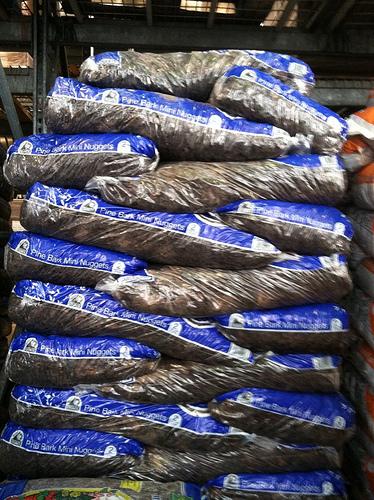General Rules of Thumb for Applying Mulch
- Do not exceed about 3 inches in depth depending on type (coarse organic mulch can be applied more thickly than fine mulch)
- Avoid compacting fine organic mulches
- Avoid applying organic mulch too early in the spring or in the fall
- Inorganic mulches should be used with appropriate designs such as xeriscape, rock gardens and Japanese gardens
- Place mulch near base of plants but not mounded up around it (particularly trees)
Examples of Organic Mulches
Organic mulches break down in the soil over time providing organic matter and releasing nutrients into the soil. See Resources for Applying mulches below for examples of how to apply different types of mulches.
- Newspaper
- Wood chips
- Bark mulch
- Grass clippings
- Straw
- Seed hulls
- Pine needles
- Compost
- Leaves
- Arborist mulch
Match plants to mulch type. Some drought tolerant plants do not tolerate moist soils. Avoid using organic mulching with these plants. Gravel and shell mulches increase heat around plants potentially causing stress conditions.

Examples of Inorganic Mulch
- Gravel
- Weed barrier cloth (not recommended in areas with perennial weeds)
- Decorative glass
- Rubber (not recommended in planting beds)
- Shells
Additional Resources:
Problems with Organic Mulches
Problems with Inorganic Mulches
West
Utah – Using Mulches in Utah Landscapes and Gardens
Midwest
Kansas- Tips on Applying Mulch
When Applying Mulch, Trees Need to Breathe
Southeast
